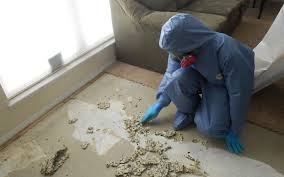When tragedy strikes, the aftermath is not just emotional — it’s often physical. Crime scenes, accidents, suicides, and unattended deaths can leave behind dangerous biohazards that require specialized cleaning. Trauma scene cleanup, sometimes known as biohazard remediation, is the meticulous process of cleaning, sanitizing, and restoring a location to safe conditions after a traumatic event. It’s a task that demands professionalism, discretion, and compassion.
What Is Trauma Scene Cleanup?
Trauma scene cleanup involves the removal of biological contaminants, blood, bodily fluids, and other potentially infectious materials from a site where a violent or accidental death, injury, or contamination has occurred. These scenes may result from:
- Homicides or suicides
- Accidents with significant blood loss
- Unattended deaths (bodies not discovered for days or weeks)
- Industrial accidents
- Drug labs or hazardous material exposure
Because of the potential exposure to bloodborne pathogens (such as HIV, hepatitis B and C), trauma scene cleanup is governed by regulations and safety protocols, including OSHA’s Bloodborne Pathogens Standard and EPA hazardous waste guidelines.
Why Professional Trauma Cleanup Is Essential
- Health and Safety Risks
Blood and bodily fluids can carry dangerous pathogens. Without proper protective equipment and sanitization procedures, those attempting cleanup can be exposed to serious health hazards. - Emotional Toll
Family members or loved ones should never be left to clean up the aftermath of a traumatic incident. The psychological impact can be devastating. Hiring professionals ensures that the scene is handled with care and dignity, allowing survivors to begin the healing process. - Proper Disposal
Biohazard waste must be disposed of in accordance with local, state, and federal laws. Professionals have the training and certifications to handle, transport, and dispose of these materials safely and legally. - Full Restoration
Trauma cleanup companies go beyond surface cleaning. They inspect for hidden contamination (e.g., soaked flooring, behind walls), neutralize odors, and use hospital-grade disinfectants to fully restore the space.
The Trauma Cleanup Process: Step by Step
Here’s a general overview of how professional trauma scene cleanup is conducted:
1. Assessment and Planning
- The team assesses the scene to determine the extent of contamination.
- A site-specific remediation plan is developed, often including PPE requirements, waste disposal needs, and structural evaluation.
2. Biohazard Removal
- Blood, tissue, and contaminated materials (like furniture, carpet, or drywall) are safely removed.
- All porous materials that cannot be disinfected are properly bagged and labeled for disposal.
3. Cleaning and Disinfection
- Technicians thoroughly clean and disinfect affected areas using EPA-registered disinfectants.
- Special attention is given to high-touch surfaces and hidden areas.
4. Deodorization
- Industrial-grade deodorizers or ozone treatments are used to eliminate any lingering odors.
5. Final Inspection and Clearance
- After cleaning, a final inspection ensures the site is safe, habitable, and odor-free.
- In some cases, testing is done to confirm that biohazard levels are below regulatory thresholds.
Who Performs Trauma Scene Cleanup?
Trauma cleanup is not performed by police, EMTs, or firefighters — it’s handled by specialized biohazard remediation companies. These teams are trained in:
- Bloodborne pathogen protocols
- Hazardous waste disposal
- Crime scene preservation (when needed)
- Emotional sensitivity and confidentiality
Employees typically undergo extensive training, vaccinations (e.g., hepatitis B), and certification in OSHA and HAZWOPER standards.
When to Call a Trauma Cleanup Service
You should contact a trauma cleanup service immediately after:
- Police, EMS, or the coroner has cleared the scene.
- A biohazardous event occurred and you’re unsure how to clean it safely.
- You’re emotionally or physically unable to manage the cleanup yourself.
Many reputable cleanup services are available 24/7 and can respond within hours. They often work with homeowners’ insurance, helping to ease the financial burden on families.
Compassion and Discretion Are Key
One of the most important qualities in trauma cleanup isn’t technical — it’s human. Trauma cleaners often interact with grieving families and must demonstrate empathy, discretion, and respect for the space and those affected. Most teams arrive in unmarked vehicles to maintain privacy and are trained to communicate with compassion.
Conclusion
Trauma scene cleanup is a critical service that restores both safety and dignity to spaces affected by tragedy. It’s more than just cleaning — it’s about providing peace of mind during some of life’s most painful moments.
